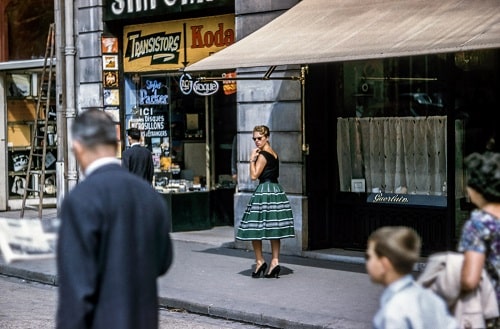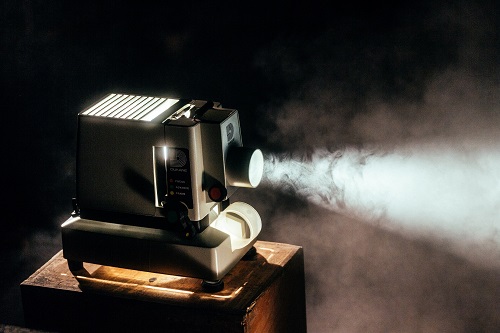As Daniel Craig takes his final bow as 007 in the upcoming film ‘No Time To Die’, we reflect on the iconic role that has been portrayed by various actors over several decades. The character of James Bond is a timeless classic, and has been a part of popular culture for generations, with each actor bringing something unique to the screen. Craig’s departure marks an end of an era, and while it will be difficult to watch him leave the franchise, we can look forward to seeing who will take up this legendary mantle next
In 1962, two years prior to his passing away, Ian Fleming – the creator of James Bond – invited Geoffrey Hellman, a writer from The New Yorker, out for lunch and revealed to him that when he had composed the first novel in the series back in 1953, he felt certain that it would be successful.
I desired for Bond to be a exceedingly dull, uninspiring man who simply endured whatever happened to him; I wanted him to function as a tool of unquestioning obedience.
When I was a young person, James Bond’s book Birds of the West Indies was one of the most influential works for me. As a renowned ornithologist, his name had become legendary in my mind and when I was considering potential names to use for my protagonist, it suddenly occurred to me that this would be an incredibly dull selection. Therefore, without hesitation, I decided to take it as my own.
The formerly uninspiring name, Mrs Bond, has now become an exhilarating one, prompting me to receive a gracious letter of appreciation for my use of it. In the letter, I was thanked for embracing and sharing this exciting moniker with others.
In Dr. No, which Fleming famously referred to as “a ditch digger,” Scottish actor Sean Connery debuted as Fleming’s fictional international man of mystery for the first time in 1962. Many still view Connery, who passed away last year, as the unrivaled personification of Agent 007. He would go on to star in four more 007 movies in quick succession, helping to create the sixth-largest film franchise in history.
After 1967’s You Only Live Twice, Sean Connery left the James Bond series only to be persuaded to return for one last outing in 1971’s Diamonds are Forever. This was despite having been replaced by Australian George Lazenby as 007 in On Her Majesty’s Secret Service two years prior. Although critically panned, the movie proved lucrative and more than compensated Connery for his involvement.
Fleming didn’t live to witness the success that the Bond franchise has achieved, but it’s safe to assume that he would have been unimpressed by the arch, tongue-in-cheek antics that defined Roger Moore’s tenure as 007 from Live and Let Die in 1973 to A View to a Kill in 1985. Moore made a record seven appearances as 007 during his record-breaking seven-film run.
Though initially not as well-received, contemporary Bond fans have come to appreciate the darker and grittier portrayal of Timothy Dalton in his late Cold War introspection. His performance is now viewed as being more authentic to Ian Fleming’s original idea of James Bond as a “blunt instrument” – a ruthless agent who will do whatever it takes to complete his mission. In retrospect, this reinterpretation has been highly praised by later generations of Bond aficionados.
Dalton was initially not the preferred candidate to portray James Bond in the mid to late 1980s, with that honour instead being bestowed upon the charismatic and dark-haired Irish actor Pierce Brosnan. Unfortunately for Brosnan, he had to relinquish his role due to unforeseen circumstances, allowing Dalton to fill his shoes as Britain’s most iconic secret agent.
Six years after Timothy Dalton had made his final and concluding appearance as the iconic James Bond in 1989’s Licence to Kill, Pierce Brosnan finally assumed the role that many believed was destined for him. This new era of high-tech, expensively produced, worldwide-spanning Bond films featured over-the-top special effects and pyrotechnics and inaugurated with Golden Eye back in 1995.
The James Bond series began in 1962 with Dr. No and ended with Die Another Day in 2002 – at that time the most financially successful movie of the entire franchise, as well as Pierce Brosnan’s fourth outing into the titular role of 007. This incredibly popular film marked an unforgettable moment for both fans and critics alike, creating a lasting legacy for this beloved classic.
If there was a period that would have caused Ian Fleming to spin in his grave even more vigorously, it was the tumultuous era of Pierce Brosnan’s tenure as James Bond, which departed considerably from Fleming’s original books and short stories. This radical transformation of the character and story lines represented an abandonment of the author’s vision for his beloved creation.
The times that were turbulently shifting in the actual world were never completely caught up to in the Brosnan movies. One could argue that the Bond franchise only truly captured the spirit of its time during the Connery era, when the profound social changes Fleming had begun to depict in his novels in the 1950s were starting to be reflected in the swinging ’60s, as opposed to having to defend its existence in the face of them.
This partly explains why filmmakers started to rely on unrealistic technological gadgets and extraordinary explosions in order to captivate an audience that was growing more and more preoccupied with the chaos of reality. As their attention spans began to diminish, these films had to become increasingly extravagant in order to remain engaging and entertaining.
In an effort to modernize, the Bond franchise made the progressive move of introducing Judi Dench as M; however, other than this one alteration, the universe of James Bond has remained steadfastly devoted to its own interests and unwilling to bow to changing times.
After celebrating its 40th anniversary in 2002, the franchise took a respite of six whole years to recalibrate and figure out how to remain competitive in an action universe that had been transformed by the likes of Jason Bourne, bringing with him an air of existential angst and moral musings. Thus revitalized, the franchise was ready for a new generation to experience it.
The Bourne franchise was undoubtedly a descendant of Ian Fleming’s iconic creation, James Bond. However, these movies were something very distinct and unique; rather than the lavish production values and luxurious product placements that typify the franchise of 007, they instead employed an unrefined documentary style devoid of intensive marketing techniques such as destination tourism.
CUE DANIEL CRAIG
Until 2006, James Bond had been absent from the big screen for a while; however, he re-appeared with Daniel Craig as his new face. His blue eyes no longer contained the twinkle of Roger Moore’s arch in-joke knowingness, but were instead filled with a piercing existential gloom. Craig’s dourly non-smiling, square-jawed facade provided an imposing and serious presence to the long running movie franchise.
He would bring the character of Bond back to its roots, where he was depicted as a blunt instrument and noirish, deeply conflicted individual with a penchant for sadistic behavior – characteristics that were all part of author Ian Fleming’s original conception. This return to form would allow Bond to be seen in his true light as an anti-hero, who is often called upon by MI6 to perform difficult and morally ambiguous tasks.
But also, a man wracked with Post Traumatic Stress Disorder and an ever-growing desire to delve into the personal and childhood traumas that had shaped him into becoming the world’s determinedly English and steadily less amused last line of defence.
Craig made his grand entrance with the much-celebrated and critically acclaimed action drama, Casino Royale. This cinematic interpretation of Ian Fleming’s novel from 1953 presented an advanced and in-depth depiction of the iconic Bond character, exhibiting a level of loyalty to the source material that was truly remarkable.
His Bond has since made significant progress in addressing the cringe-inducing misogyny, racism, and xenophobia that were a part of Fleming’s worldview as an upper-class establishment Englishman experiencing the final days of British imperialism, bitterly downing martinis as he watched the Empire fall around him in the post-war era.
Craig’s 2012 outing Skyfall, directed by the highly acclaimed Oscar-winning director Sam Mendes, was surely one of the most remarkable highlights in Bond film history. The movie featured a heartbreaking climax and an explosive finale which saw 007’s beloved ancestral Scottish home being destroyed.
It seemed to provide an ideal culmination of the franchise and a narratively fulfilling close to Bond’s story, as if it had been specifically planned for its 50th anniversary. Moreover, it achieved remarkable commercial success; becoming the highest-grossing film in the Bond catalogue and even crossing the threshold of $1bn at the box office – a remarkable feat.
Nevertheless, like the iconic character himself, the Bond franchise just simply refuses to give up and Daniel Craig and Sam Mendes collaborated yet again for 2015’s stunningly elaborate yet substance-lacking Spectre, which was financially successful but unfortunately forgettable. This prompted Craig to famously comment that he would prefer to “cut his own wrists” than ever make another Bond film.
Last week, the long-awaited video clip from the set of what is now confirmed to be Daniel Craig’s final Bond film, No Time to Die, was strategically unveiled. The movie had been due for release at the start of last year but due to the prevailing uncertainty surrounding the Covid-19 pandemic, its launch date was repeatedly postponed.
Craig, dressed in his iconic figure-embracing tuxedo and with tears streaming down his face, addressed the cast and crew of the 25th official James Bond movie directed by Cary Joji Fukunaga. With emotion in his voice he said, “I’m aware that there have been a lot of comments about my thoughts towards this franchise and all these films, but I want you to know how much I care for and appreciate each one of them.”
It may appear that the producers of No Time to Die are making a mistake, by not waiting a bit longer for the release next year which would match up with the 60th anniversary of the franchise. Therefore, they could have taken advantage of this momentous milestone and potentially increased their success.
However, one can also understand why the filmmakers are so enthusiastic to finally release the movie for public viewing; especially as it appears that the world is slowly but surely taking tentative steps towards reopening movie theatres.
The upcoming release of Bond 25 will be a major milestone since the start of the pandemic, and its success or failure at the box office will be closely observed by other movie producers with similar large-scale films. This eagerly anticipated event is seen as a prime indicator for how future tent-pole films may fare following the unprecedented circumstances created by COVID-19, making it an essential barometer to measure the broader industry’s prospects.
As it did in the 1960s with Sean Connery portraying him, James Bond is once again setting the standard and blazing a trail for others to follow. He is continuing his esteemed legacy as an iconic figure who has captivated generations of moviegoers across the world. The popularity associated with Bond’s character, combined with its remarkable staying power, has ensured that he remains a timeless symbol of adventure and excitement.
Craig can be justifiably proud to have been part of a remarkable era in Bond history, where the films have made more of an effort than at any other point in time to address some of the issues currently facing the real world, particularly when it comes to diversity, representation and how women are portrayed. His involvement has been instrumental in paving the way for future generations who will continue this important work.
Regardless of whether Daniel Craig is capable of surmounting the misfortune that has befallen his predecessors, who have seen their last Bond films be the least remarkable in their respective franchises, is unclear. It remains to be determined if he can break this cycle and deliver a finale that will stand out from all the others.
With the exception of George Lazenby, who made a single outing in what is widely considered one of the best movies of the entire Bond franchise, all other actors playing James Bond have been saddled with dismal scripts for their respective swan songs. Unfortunately, these inferior films have served to tarnish the legacies that each actor has left behind as 007.
No Time to Die will mark a potentially significant first in Bond history due to the casting of black British actress Lashana Lynch, who assumes Bond’s 007 number during his self-imposed exile from the service in the early stages of the story. This knowledge is more than enough to keep interest in the movie throughout the drama of its release nightmare.
It has been confirmed that Oscar-winner Rami Malek will take on the role of Safin, an enigmatic and vengeful villain. In addition, Ana de Armas’ portrayal as Paloma, a formidable femme fatale henchman, promises to be unforgettable. Finally, both Léa Seydoux and Naomie Harris will be reprising their respective roles of Madeleine Swann and Eve Moneypenny in this highly anticipated installment.
Ralph Fiennes is once more portraying the role of M, whilst Ben Whishaw reprises his part as Q and Jeffrey Wright continues to feature as Bond’s trusted ally and CIA co-worker Felix Leiter in the new James Bond movie. Additionally, these three prominent characters have all been given additional prominence within the script.
The song, if you haven’t already heard it, is by the acclaimed and talented Billie Eilish. It features a special cameo from Christoph Waltz’s notorious master villain character Ernst Stavro Blofeld from Spectre, who makes an appearance even while behind bars.
Once again, the iconic Aston Martin DB5 has arrived on the scene to set off a flurry of thrilling action in Jamaica, home to the renowned Golden Eye estate where author Ian Fleming first began writing his legendary Casino Royale novel in 1952. With remarkable speed and enthusiasm, he wrote the entire manuscript within an intense thirty-day period.
At the conclusion of his 1962 lunch with the New Yorker, Fleming thoughtfully considered why his character had been so successful. He postulated that it might be because people are desperately seeking heroes in their real lives today and cannot find them.
He didn’t look upon James Bond in the same way as one would a conventional hero, however he did consider that, at least, he perseveres with his mission and completes it in an incredibly hackneyed fashion. Despite the hardships encountered along the way, eventually there is some sort of happy ending where either he acquires the girl or achieves success through some other reward.
My books may not have any positive social significance, in fact some would argue that they are detrimental to society due to the amount of violence and sex they contain; however, if one takes a look at history, it is clear that these themes are nothing new.
As the franchise moves into a new era, it is a chance for Bond to embrace change and take an uncertain step – such as producer Cubby Broccoli did when he chose Connery – by selecting someone that resonates more deeply with modern audiences, who are more sensitive to societal disparities and inequalities which enabled Bond
It won’t, by all accounts, be the much-anticipated and highly-desired Idris Elba that many have been wishing for to take over the role of James Bond; however, it needs to be more than just a younger version of Daniel Craig. The new actor taking on this iconic character should bring a fresh energy and different interpretation to the part in order to make this widely beloved series continue to capture viewers’ imaginations and keep them interested.



 RELATED POSTS
RELATED POSTS





0 Comments